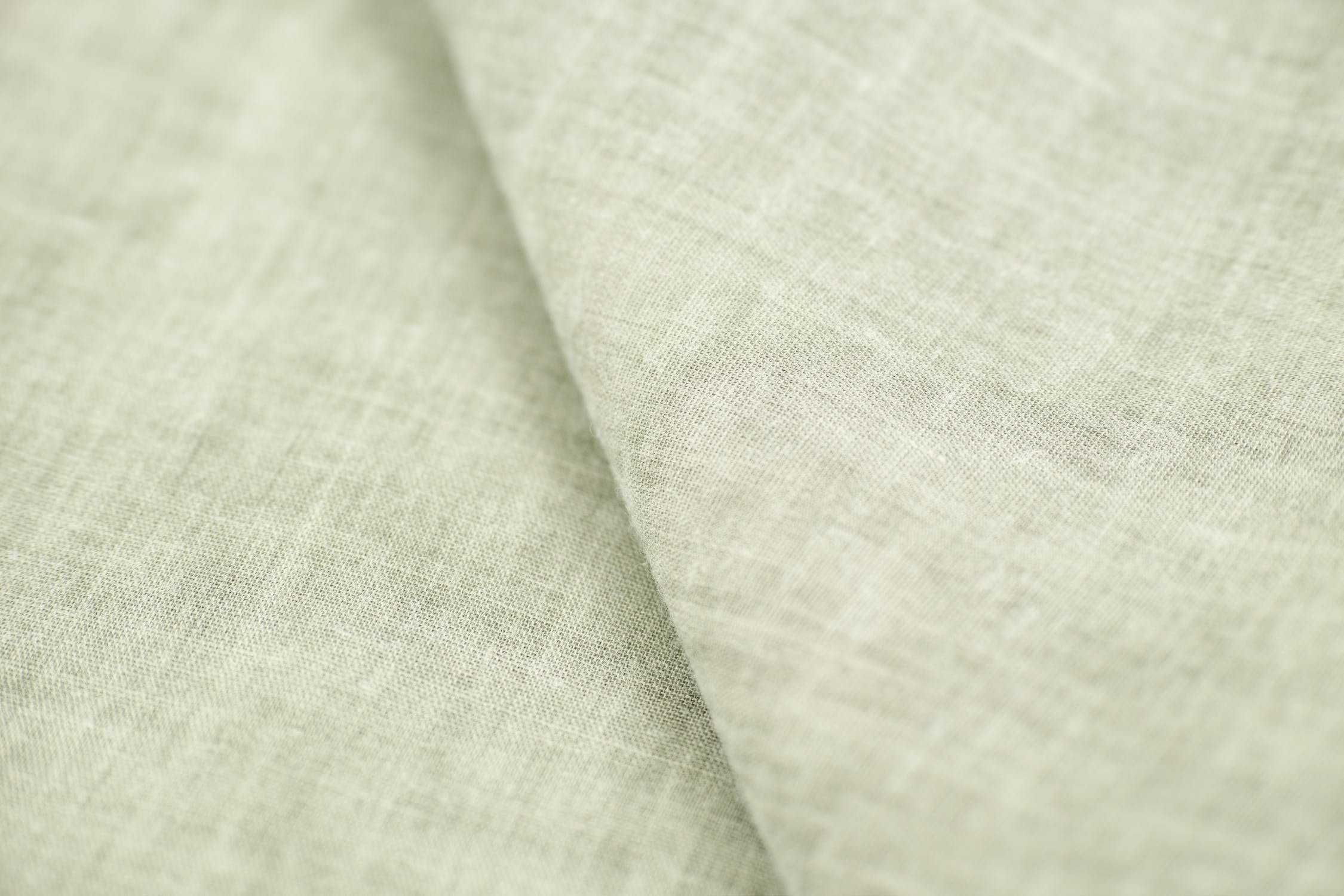Linen is a sustainable fabric made from flax fibers. The flax plant has been cultivated in just about every country in the world and has been used to make fiber for over 6,000 years. To extract the fibers, the plants are either cut or pulled by hand from the ground (it’s said that pulling creates finer linen). The seeds are then removed through a process called winnowing or ripping, followed by retting which removes the plant stock from the fibers. Once the fibers are separated to collect the longest pieces, which can be up to 20 centimeters long, they are then spun into yarn and eventually woven into fabric.
Linen textile is two to three times stronger than cotton and dries at a much faster rate. Because of its porous nature, linen has natural heat and moisture-wicking properties that make it a good conductor of warmth and a popular fabric to use for clothing in the summer. The natural fibers also hold dye colors better than some other materials, and thus the fabric is available in almost any imaginable color.
Linen does have a few downsides as well. As a fabric, it has little elasticity so it can wrinkle quite a bit. It’s also more expensive than cotton. Linen is notorious for being wrinkly.If you want to avoid wrinkles altogether, give linen blend fabrics a try as they tend to be much more smooth. Be sure your linen clothes are completely dry before wearing, as wrinkles can be even more exaggerated when the material is damp.







